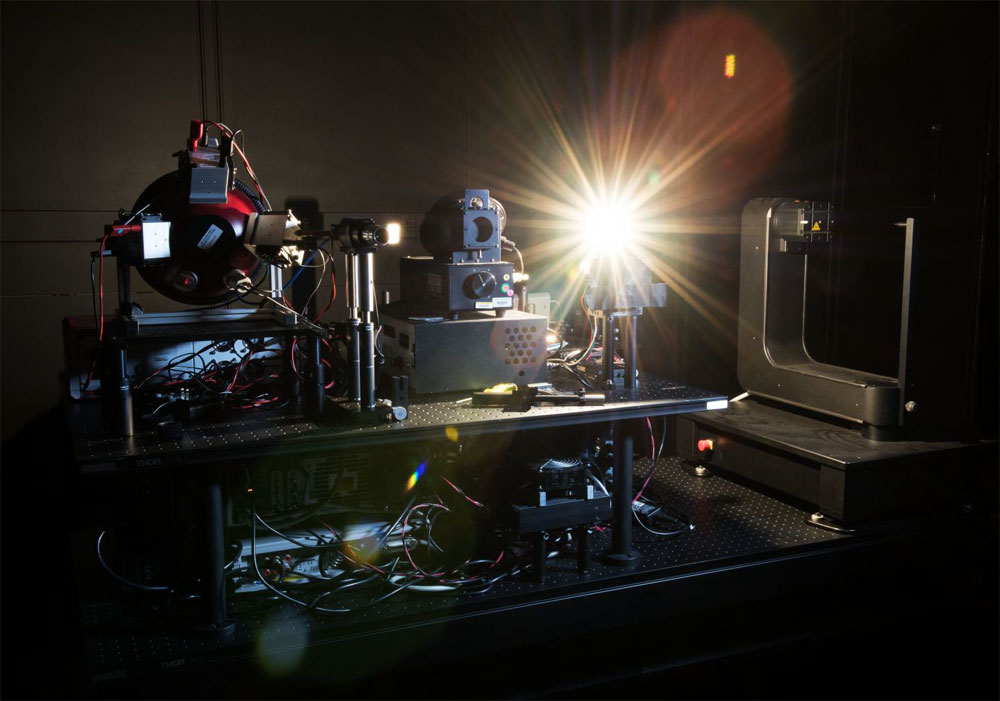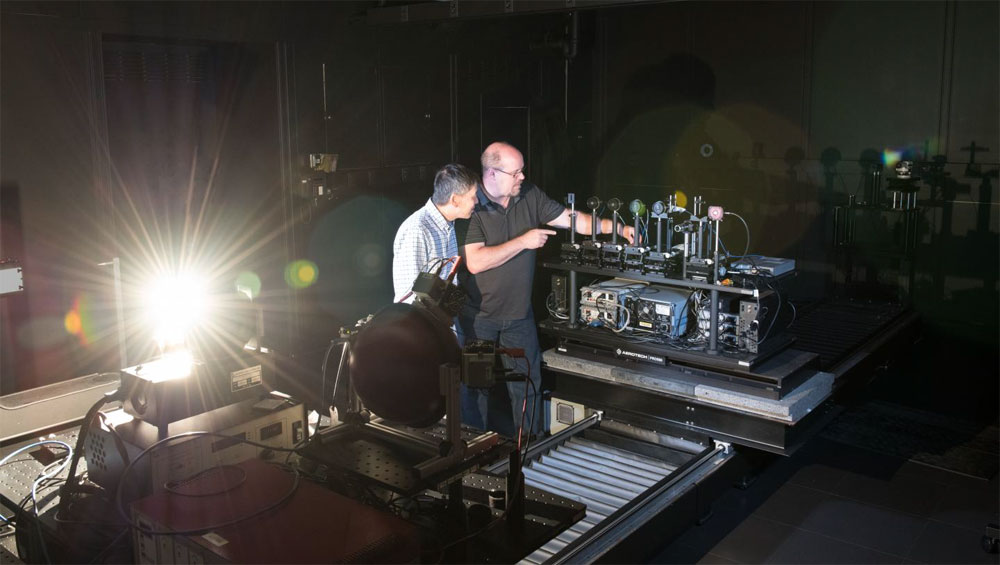
NIST Automates and Upgrades Its LED Photometry Lab
GAITHERSBURG, Md., Sept. 11, 2019 — The National Institute of Standards and Technology (NIST) has improved the accuracy and speed of its calibration service for assessing the brightness of LED lamps and other solid-state lighting products. Customers for this service include LED lamp manufacturers, the U.S. military, and other calibration laboratories.
Until recently, the NIST photometry lab measured lamp brightness with reasonably low uncertainties — between 0.5% and 1.0%, which is comparable to mainstream calibration services. Those uncertainties have now been reduced by a factor of three, to 0.2% or less.

An FEL lamp shines from one of the new automated equipment tables. This table holds all the light sources that are either being tested or being used to test a detector. Courtesy of Jennifer Lauren Lee/NIST.
The researchers have also cut the calibration time from almost a full day to a few hours by automating processes and equipment. The renovated lab has two automated equipment tables, one for the light sources and the other for the detectors. The tables travel on a rail system that positions the detectors anywhere between 0 to 5 meters away from the lamps. The distances can be controlled to within 50 μm, and the tables can be programmed to move without requiring continuous human intervention. With the new setup, the lab now has the ability to calibrate hyperspectral cameras.
Before the upgrade, to calibrate a photometer the researchers would use a broadband light source to illuminate the detector, because a single-wavelength laser light, while allowing more accuracy, would add noise to the signal, interfering with the calibration. Improvements to the lab include a custom photometer design that has minimized this noise to the point where it is negligible. This has made it possible for the researchers to use a tunable laser for photometer calibration.

NIST’s Yuqin Zong (l) and Cameron Miller in the new, fully automated NIST photometry lab. Courtesy of Jennifer Lauren Lee/NIST.
Also, the researchers can now directly measure the detector’s distance from the light source using microscope-based cameras, instead of relying on the inverse square method of measurement. One microscope sits on the light source table and focuses on a position marker on the detector table. A second microscope sits on the detector table and focuses on a position marker on the light source table. The researchers determine distances by adjusting the detector’s apertures and the position of the light sources to the focal points of their respective microscopes. “The microscopes are very sensitive to defocusing,” researcher Yuqin Zong said. “A few micrometers off, and the microscopes will tell you. They will blur the sharpness of the images.” This approach to measuring distances also allows the researchers to gauge the LEDs’ true intensity (a single number that indicates how much light the LED is putting out irrespective of distance).
The addition of a goniophotometer allows the researchers to rotate an LED lamp to measure how much light is emitted at different angles. The NIST team plans to adapt the goniophotometer for measuring LEDs’ ultraviolet (UV) output. Potential uses for UV-producing LEDs include irradiation of food products to extend their shelf life and sterilization of water supplies and medical equipment. Traditionally, commercial irradiation has used UV light emitted by mercury vapor lamps. There are no calibration labs that are currently capable of calibrating UV-producing LEDs, the researchers said. They hope to have their new LED UV calibration service ready by the end of 2019.
Companies that make solid-state lighting products rely on calibration labs like the one at NIST to test the output of their lamps. NIST scientists recently renovated the lab they use for these tests. Courtesy of Jennifer Lauren Lee/NIST and Blue Dot Sessions.
Published: September 2019